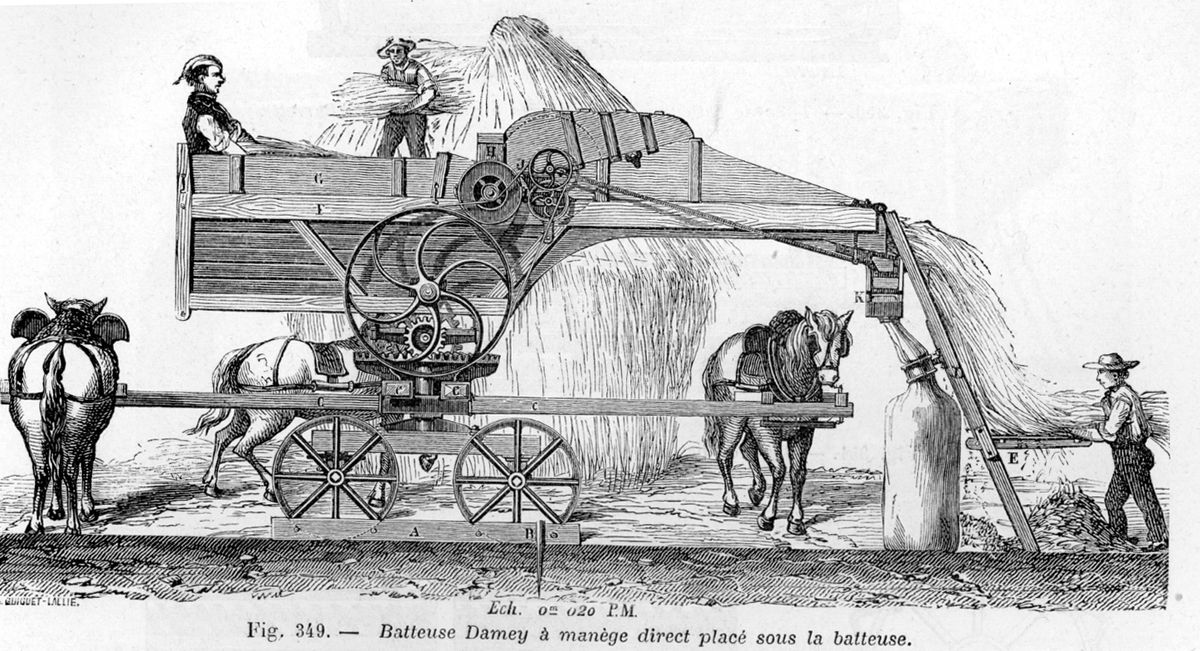Industrial renovation projects often involve complex financial arrangements, with multiple stakeholders, large sums of money, and significant risks associated with payment. Navigating these challenges requires a comprehensive understanding of the payment landscape, the ability to mitigate risks effectively, and the implementation of strategies to manage cash flow and resolve disputes. This article explores the intricacies of payment in industrial renovation works, offering insights into how contractors and project managers can ensure financial stability and smooth operations throughout the renovation process.
Key Takeaways
- Understanding the various payment models and invoicing procedures is crucial for contractors to ensure timely and accurate payment for industrial renovation works.
- Identifying potential payment risks and implementing measures such as escrow accounts and legal mechanisms can help secure payments and maintain financial health.
- Effective cash flow management through meticulous project budgeting, maintaining liquidity, and negotiating favorable payment terms with suppliers is vital for the success of renovation projects.
- Resolving payment disputes efficiently through mediation, arbitration, or dispute boards can prevent costly litigation and ensure project continuity.
- Leveraging technology such as automated payment systems, blockchain, and integrated financial management tools can enhance payment efficiency and transparency in industrial renovation projects.
Understanding the Payment Landscape in Industrial Renovation
Common Payment Models for Contractors
Contractors in industrial renovation navigate a variety of payment models, each with its own set of benefits and challenges. Lump-sum contracts offer simplicity and clear expectations, but require precise cost estimation. Cost-plus contracts provide flexibility, yet demand meticulous documentation and can lead to budget overruns.
- Time and materials contracts are straightforward, charging for actual labor and materials used, but risk inefficiency without proper oversight.
- Unit pricing models are beneficial for repetitive tasks, with payment based on the number of units completed.
Ensuring a thorough understanding of the payment model is essential for maintaining financial stability throughout the renovation process.
Construction contract reviews are crucial for understanding obligations and avoiding disputes. Payment schedules and resolving payment disputes are key for project success.
Invoicing Procedures and Timelines
Timely and accurate invoicing is the lifeblood of cash flow in industrial renovation. Invoice generation should be prompt, following the completion of milestones or according to the agreed schedule.
Invoicing timelines are critical; they must align with project phases and contractual agreements. Delays can cause significant cash flow disruptions. To ensure efficiency:
- Establish clear invoicing schedules
- Detail the work or services provided
- Include payment terms and deadlines
Streamline payment collection with online options, incentives, and reminders. Address client invoice disputes promptly and professionally through review, communication, negotiation, or mediation.
It’s essential to maintain a consistent invoicing process to avoid payment delays and maintain financial stability.
The Role of Payment Certificates
Payment certificates are pivotal in industrial renovation, serving as a formal recognition of work completed and a trigger for payment release. They act as a financial safeguard, ensuring that contractors receive due compensation for their progress.
Transparency and accuracy in payment certificates are crucial. They detail the work done, associated costs, and any variations from the original contract. This clarity helps prevent disputes and maintains a healthy cash flow.
- Verification of work completed
- Calculation of payment due
- Adjustment for any changes in scope
Payment certificates must be issued timely to avoid project delays and financial strain on contractors.
Regular updates to payment certificates can reflect the dynamic nature of industrial renovation projects, adapting to on-site realities and keeping financial transactions aligned with actual progress.
Identifying and Mitigating Payment Risks
Assessing Creditworthiness of Clients
Before engaging in industrial renovation works, it’s crucial to evaluate the financial stability of your clients. Conduct client credit checks to gain insights into their payment history and financial health. This preemptive step can save you from future payment disputes and cash flow disruptions.
Creditworthiness is not just about timely payments; it also reflects a client’s ability to fulfill contractual obligations. Consider incorporating penalty clauses for late payments to safeguard your business resources. These clauses serve as a deterrent against delays and reinforce the seriousness of the payment schedule.
Effective risk management involves more than just assessing credit scores. It’s about building a comprehensive profile that includes past project performance, market reputation, and financial resilience.
Remember to negotiate effectively, understand lien rights, and consider mediation for conflict resolution. These strategies can help maintain a positive cash flow and ensure the continuity of your renovation projects.
Use of Escrow Accounts in Large Projects
Escrow accounts offer a secure way to manage funds during the complex process of industrial renovation. By acting as a neutral third party, an escrow service ensures that payments are released only when specific project milestones are met. This mechanism protects both the contractor and the client from potential financial disputes.
Escrow accounts are particularly useful in large projects where the financial stakes are high. They provide a structured approach to payment, instilling confidence in all parties involved.
- Establish clear contractual milestones
- Deposit funds into the escrow account
- Release payments upon milestone completion
Escrow services add a layer of security to the payment process, safeguarding the interests of all involved stakeholders.
Legal Mechanisms for Payment Security
To safeguard financial interests in industrial renovation, contractors must leverage legal mechanisms for payment security. Performance bonds ensure project completion, while retention clauses protect against defects post-completion.
- Performance Bonds: Guarantee work fulfillment
- Liens: Secure payment against property
- Retention: Withhold a project percentage until satisfactory delivery
Payment security is not just about enforcement; it’s about creating a culture of mutual trust and accountability.
Contractual terms should be clear and enforceable, with provisions for addressing non-payment. Strategies for addressing non-payment include effective contract management and utilizing dispute resolution mechanisms to mitigate risks and ensure financial security.
Strategies for Effective Cash Flow Management
Project Budgeting and Cost Control
Effective budget management is the cornerstone of any industrial renovation project. By establishing a clear budget, contractors can set financial boundaries and allocate resources efficiently. Diverse financing options should be explored to ensure a steady cash flow, essential for the project’s health.
Cash flow oversight is critical to detect any discrepancies early on. Regular financial reviews allow for timely adjustments, keeping the project on track and within budget. This proactive approach minimizes the risk of cost overruns and ensures that funds are available when needed.
- Establish a clear budget
- Allocate resources efficiently
- Explore diverse financing options
- Conduct regular financial reviews
- Minimize the risk of cost overruns
Maintaining a transparent line of communication with all stakeholders is vital. It ensures that everyone is on the same page regarding financial expectations and project progress.
Dispute resolution mechanisms should be in place to address any payment conflicts swiftly, preserving the project timeline and relationships with clients and suppliers.
Maintaining Liquidity During Construction Phases
Maintaining liquidity is crucial for the financial health of any construction project. Effective cash flow management is the cornerstone of liquidity, ensuring that funds are available when needed. It’s essential to have a strategy that encompasses debt management and anticipates potential cash shortfalls.
- Negotiate favorable payment terms with clients and suppliers.
- Utilize financing options to bridge gaps in cash flow.
- Regularly review and adjust cash flow forecasts.
Keeping a close eye on expenditures and incoming payments is vital for sustaining operations without interruption.
By implementing these practices, construction companies can navigate the financial ebbs and flows inherent in industrial renovation works.
Negotiating Payment Terms with Suppliers
Securing favorable payment terms with suppliers is crucial for maintaining a healthy cash flow. Negotiations should aim for flexibility that benefits both parties, ensuring project sustainability and supplier commitment.
Payment terms can vary widely, but common goals include extended payment periods, volume discounts, and milestone-based payments. It’s essential to approach these discussions with a clear understanding of your project’s financial forecast and the supplier’s constraints.
- Establish clear payment timelines
- Agree on specific payment milestones
- Seek discounts for early payments or bulk purchases
Ensuring that both parties are clear on the expectations and consequences of non-adherence to the agreed terms can prevent many disputes and foster a cooperative relationship.
Remember, the goal is not just to delay payments but to create a partnership that will support both the project’s success and the supplier’s business stability.
Dispute Resolution in Payment Conflicts
Mediation and Arbitration Processes
Mediation offers a flexible, confidential platform for resolving payment disputes without burning bridges. Parties retain control, guided by a neutral mediator to find common ground.
Arbitration, a more formal alternative, binds parties to the decision of an appointed arbitrator. It’s swifter than court litigation, but less flexible than mediation.
-
**Steps in Mediation: **
- Initial statement by each party
- Identification of issues
- Information gathering
- Option generation
- Negotiation
- Settlement
-
**Arbitration Phases: **
- Selection of arbitrator(s)
- Exchange of statements and evidence
- Hearing
- Award
Both processes aim to resolve conflicts efficiently, preserving relationships and project momentum.
The Impact of Litigation on Project Continuity
Litigation can be a significant disruptor in industrial renovation projects. Delays and cost overruns are often the immediate consequences, as legal proceedings can halt construction activities. The uncertainty of litigation outcomes further complicates project timelines and financial planning.
Cash flow is severely impacted when funds are tied up in legal battles. Contractors and clients alike must prepare for the strain on resources that comes with protracted court cases. To mitigate these risks, parties should aim for:
- Proactive risk identification
- Early dispute resolution mechanisms
- Strong contractual protections
The goal is to maintain project momentum while navigating the complexities of legal disputes.
Clear communication and a structured approach are essential in managing payment disputes. Timely payments, cash flow management, and digital solutions are crucial for sustainable construction projects.
Utilizing Dispute Boards for Ongoing Projects
Dispute boards offer a proactive approach to conflict management in industrial renovation. Established early in the project lifecycle, they provide ongoing support and can prevent disputes from escalating.
- Expertise on tap: Dispute boards consist of industry experts who understand the complexities of construction projects.
- Real-time resolution: They offer immediate assistance to resolve issues as they arise, avoiding costly delays.
- Continuity and understanding: Board members become familiar with the project, leading to informed decisions that respect the project’s history and context.
By fostering an environment of transparency and continuous dialogue, dispute boards can significantly reduce the likelihood of major conflicts.
The use of dispute boards is a testament to the industry’s commitment to efficiency and collaborative problem-solving. Their role in maintaining project momentum cannot be overstated.
Leveraging Technology for Payment Efficiency
Automated Payment Systems and Software
In the realm of industrial renovation, automated payment systems are revolutionizing how contractors manage finances. These systems facilitate efficient debt collection, streamline invoicing, and ensure timely payments. By integrating online payment portals, contractors can track payments in real-time and bolster security measures.
- Streamline invoicing and payment tracking
- Enhance security with encrypted transactions
- Improve cash flow through timely collections
Embrace automation to reduce human error and accelerate payment processes.
The adoption of these technologies not only simplifies financial management but also contributes to a healthier cash flow. Contractors who leverage automated systems position themselves at the forefront of financial efficiency in the construction industry.
Blockchain in Payment Tracking and Verification
The advent of blockchain technology has revolutionized the way payments are tracked and verified in industrial renovation. Blockchain’s immutable ledger ensures that each transaction is recorded securely and transparently, making it nearly impossible to alter or falsify payment histories.
Smart contracts automate and enforce the terms of payment upon the completion of specified milestones. This reduces the need for manual oversight and accelerates the payment process. The integration of blockchain with existing payment systems offers a robust solution for managing complex financial transactions in real-time.
- Enhanced security and fraud prevention
- Real-time payment tracking
- Reduced administrative overhead
- Improved trust among stakeholders
The integration of blockchain, smart contracts, and automated systems in construction payments streamline processes, ensure transparency, and minimize delays for efficient financial management.
Integrating Financial Management Tools with Project Management
The seamless integration of financial management tools with project management software is pivotal for real-time tracking of expenses and revenues. Efficient financial oversight is achieved when all monetary transactions are visible within the project’s lifecycle. This transparency aids in preventing budget overruns and ensures that financial decisions are data-driven.
Integration of these systems allows for a holistic view of the project’s financial health, enabling proactive adjustments to be made. It’s not just about tracking costs, but also about forecasting future expenses and revenues to maintain a balanced cash flow.
- Real-time budget monitoring
- Automated expense tracking
- Forecasting financial outcomes
- Simplifying financial reporting
By aligning financial tools with project management, stakeholders gain a comprehensive understanding of the project’s financial trajectory, which is essential for strategic planning and execution.
In today’s fast-paced business environment, ensuring payment efficiency is crucial. At Debt Collectors International, we specialize in streamlining your collections process, leveraging cutting-edge technology to recover your funds swiftly and effectively. Don’t let overdue accounts disrupt your cash flow. Visit our website now to explore our comprehensive debt collection solutions and take the first step towards optimizing your receivables management.
Frequently Asked Questions
What are the most common payment models used in industrial renovation contracts?
The most common payment models include lump-sum, cost-plus, guaranteed maximum price, and unit price contracts. Each model has its own implications for risk distribution and cash flow management.
How can contractors ensure timely payments through invoicing procedures?
Contractors can ensure timely payments by setting clear invoicing schedules, providing detailed and accurate invoices, and maintaining open communication with clients to quickly resolve any issues that may arise.
What is the purpose of payment certificates in industrial renovation projects?
Payment certificates are used to formally acknowledge the completion of certain stages of work or the supply of goods, serving as a basis for the release of funds according to the contract terms.
How can a contractor assess the creditworthiness of a potential client?
A contractor can assess a client’s creditworthiness by reviewing their financial statements, credit history, and past project performance, as well as seeking references from other industry professionals.
What are the benefits of using escrow accounts for large industrial renovation projects?
Escrow accounts provide a secure way to handle payments, ensuring that funds are only released when certain project milestones are met, thus reducing the risk of non-payment and financial disputes.
How can technology improve payment efficiency in industrial renovation works?
Technology can streamline payment processes through automated systems, enhance transparency with blockchain-based tracking, and integrate financial management with project management tools to provide real-time financial oversight.





